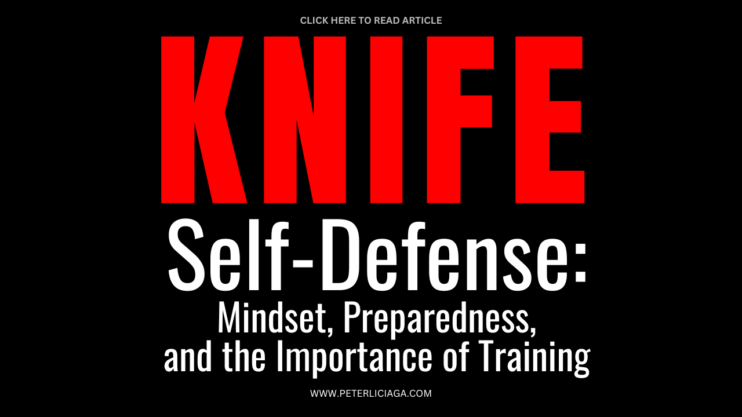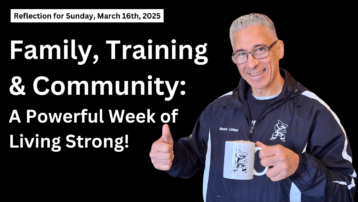In a dangerous encounter, hesitation can be the difference between survival and becoming a victim. Knife attacks are unpredictable, fast, and often unavoidable. Unlike a fistfight, where you might take a hit and keep going, a knife can end the fight in an instant. Understanding this reality is the first step in preparing for such encounters.
Why Train for Knife Defense?
Many people assume that because they can throw a punch or wrestle someone to the ground, they can defend against a knife. This is a dangerous assumption. Knife attacks are chaotic and often involve multiple rapid slashes or thrusts. Training for knife defense is not about learning to “fight” with a knife but rather about surviving and escaping. The goal is to avoid injury or minimize damage while creating an opportunity to get to safety.
The Reality of Knife Attacks
A common misconception is that knife attacks are telegraphed and dramatic, similar to what we see in movies. In reality, they are fast, brutal, and often delivered from close range with little warning. Assailants don’t wave their knife around like in Hollywood—they strike suddenly, targeting vital areas. This is why learning the principles of threat recognition, distance management, and rapid response is critical.
Key Concepts and Principles in Knife Defense
1. Threat vs. Attack
Understanding the difference between a threat and an attack helps determine your response:
- A threat is when the knife is displayed but has not yet been used.
- An attack is when the knife is actively being used against you.
If it’s a threat, de-escalation and escape are the best options. If it’s an attack, you must react immediately and decisively to minimize harm.
2. Distance Management: The Key to Survival
Distance is your best defense. The closer you are to an attacker, the less time you have to react. Effective distance management involves:
- Recognizing the danger zone where a knife can reach you before you react.
- Understanding safe zones where you have time to escape or prepare for defense.
- Using footwork and positioning to keep the attacker at bay.
3. Control the Weapon, Control the Fight
If escape is not possible, controlling the weapon-bearing limb is crucial. This doesn’t mean trying to grab the blade (a fatal mistake), but rather controlling the wrist, forearm, or elbow to neutralize the attack. Redirecting and disrupting the attacker’s movements gives you a chance to escape or counterattack.
4. A-GAME: Awareness, Assessment, Action
A knife attack is not the time to hesitate. The A-GAME principle helps you stay ahead:
- Awareness – Recognize potential threats early.
- Assessment – Quickly analyze the situation and decide the best course of action.
- Action – Move first. Hesitation allows the attacker to gain the advantage.
5. G-FORCE: Get Out, Get Safe, Go Report It
Your priority is survival, not winning a fight.
- Get Out: If escape is possible, take it.
- Get Safe: If you can’t escape immediately, create distance and position yourself to defend.
- Go Report It: Once safe, report the attack to authorities.
Training for Survival: The Importance of Drilling
Modern Arnis: Understanding Striking & Blocking Zones
Martial arts like Modern Arnis provide practical frameworks for self-defense. One critical concept is the 12 striking and blocking zones, which help in recognizing common attack angles and responses. In our seminar, we focus on:
- Zones 1-2: High slashes (left/right angles)
- Zones 3-4: Mid-level strikes
- Zones 5-7: Thrusting & downward motions
- Zone 12: Overhead downward attack
By understanding these zones, students develop an instinctive response to different attack patterns.
Drills to Improve Reaction and Decision-Making
- “5,6,7” Drill: A fun and effective drill that sharpens coordination and reaction time.
- Reaction Drills: Simulating surprise attacks to develop fast reflexes.
- Distance Management Drills: Training to recognize reaction gaps and move accordingly.
Mindset and Preparedness: The Will to Act
A key aspect of self-defense is mindset. Your ability to survive a knife attack is not just about technique—it’s about having the mental resilience and preparedness to act under stress. This means:
- Accepting that violence is real, and preparing for it doesn’t mean living in fear—it means living responsibly.
- Training your mind to stay calm under pressure and respond with purpose.
- Practicing scenario-based training so your responses become second nature.
Final Thoughts: Train, Equip, and Stay Ready
The goal of training in knife defense is not to become a fighter but to be prepared for the worst-case scenario. Developing the right mindset, understanding key principles, and consistently drilling techniques will significantly increase your chances of surviving a knife attack. Remember: Action is always faster than reaction. Stay aware, stay prepared, and keep training.
Want to Learn More?
If you’re interested in future knife self-defense seminars, reach out to me to find out when the next training session is available. Equipping yourself with knowledge and skill is one of the best investments you can make in your personal safety.




